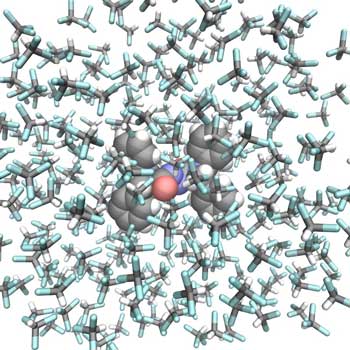| Jun 18, 2020 | |
Researchers create a photographic film of a molecular switch(Nanowerk News) Molecular switches – they are the molecular counterparts of electrical switches and play an important role in many processes in nature. Such molecules can reversibly interconvert between two or more states and thereby control molecular processes. |
|
| In living organisms, for example, they play a role in muscle contraction but also our visual perception is based on the dynamics of a molecular switch in the eye. | |
| Scientists are working intensively to develop novel molecular components that enable switching between different states, so that molecular processes can be specifically controlled. | |
| A European research team led by nanotechnologist Dr. Saeed Amirjalayer from the University of Münster now gained a deeper insight into the processes of a molecular switch: Using molecular dynamics simulations, the scientists produced a photographic film at the atomic level and thus tracked the motion of a molecular building block. | |
| The result was a light-controlled "pedalo-type motion", going forward and backward. Although it had already been predicted in this context in earlier work, it could not be directly proven so far. | |
 |
|
| Molecular structure of the photo-responsive molecular switch (center) surrounded by solvent molecules. The scientists revealed a light-induced pedalo-type motion. (© ACS) | |
| In the future, the results may help to control the properties of materials with the help of molecular switches – for example, in order to release drugs specifically from nano-capsules. | |
| "For efficient embedding in novel responsive materials, detailed elucidation of the switching process and thus the way they function at the molecular and atomic level is crucial," emphasizes Dr. Saeed Amirjalayer, group leader at the Institute of Physics at Münster University and the Center for Nanotechnology (CeNTech). | |
| The study has been published in the The Journal of Physical Chemistry Letters ("Photoinduced Forward and Backward Pedalo-Type Motion of a Molecular Switch"). | |
Background and methods |
|
| Molecular dynamics simulations enable, by calculating the interactions between atoms and molecules, to describe their motion in the computer. In their current study, the scientists investigated an azodicarboxamide-based molecular switch in this way, using a so-called combined quantum mechanical/molecular mechanical method in the simulations. | |
| "Previous experimental and theoretical studies provided only an indirect insight into the operation mechanism of such a switch in solution. With the help of our theoretical approach, we could now follow the light-induced dynamics while taking the molecular environment into account," explains Saeed Amirjalayer. | |
| The pedalo-type motion of the switch, triggered by light, moves backward and forward – like a bicycle pedal. Detailed understanding of the operation mechanism of a photo-responsive switch forms an important basis for the application of these molecular building blocks in novel "intelligent" functional materials. |
| Source: Westfälische Wilhelms-Universität Münster | |
|
Subscribe to a free copy of one of our daily Nanowerk Newsletter Email Digests with a compilation of all of the day's news. |
